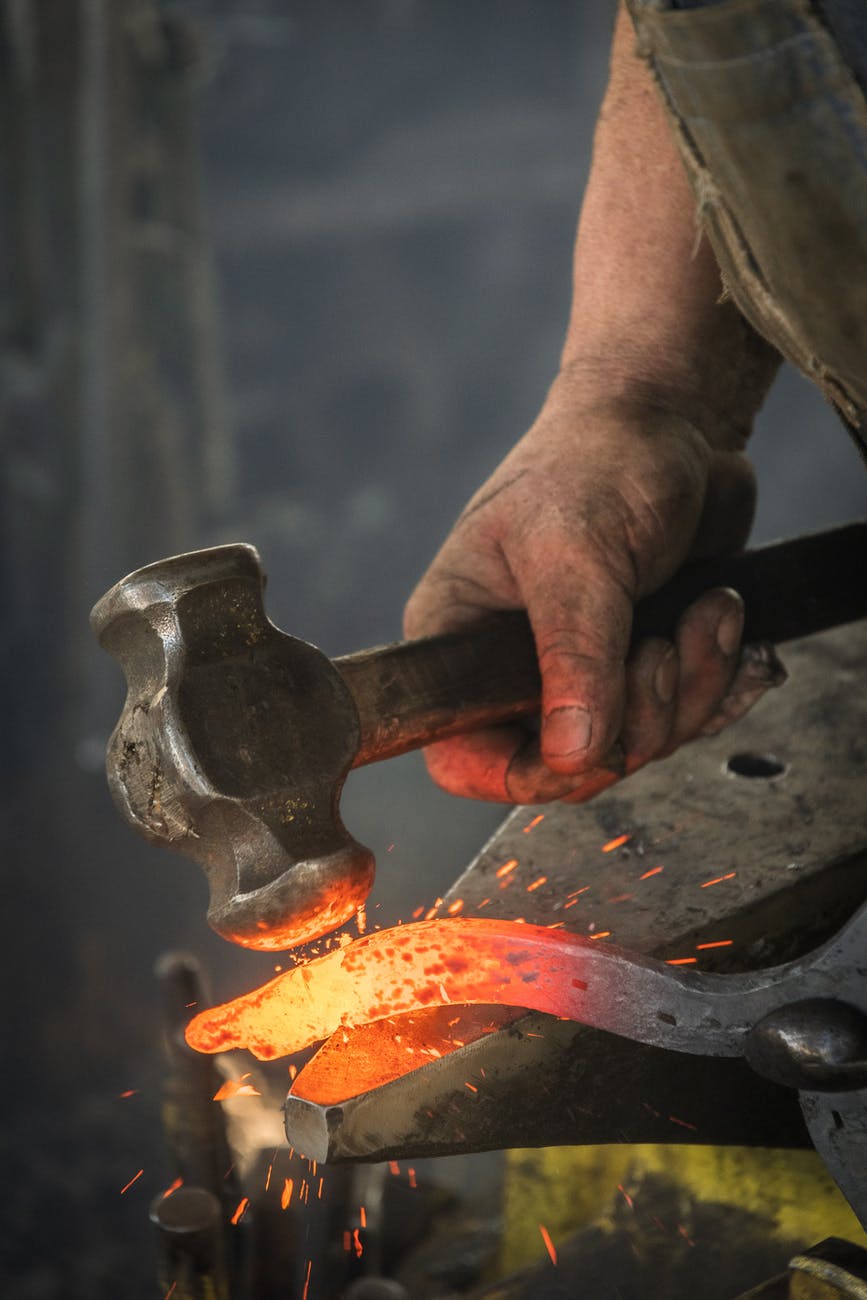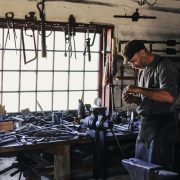Before the modern world was a reality, a blacksmith was an artisanal breed that worked with more of your everyday items for people.
Today, the blacksmith’s trade has turned into more of an artwork. How this process takes place may have changed a little, but much of it remains the same. For example, metal gets heated in the forge and the heating of the item comes out at a high temperature. Next, the item will be tempered to make it less brittle.
Exposure on the Job
Unfortunately, the blacksmith faces much exposure when it comes to asbestos products. Important to note, one thing that you should know about this hazardous mineral is how it resists heat and fire. That’s part of the reason it became popular with blacksmiths is this profession often works with intense levels of heat. Without the right materials, it can be unbearable heat.

Some of the equipment a blacksmith uses that could have asbestos-based fibers in it include:
-
Gloves
-
Aprons
-
Masks
The Scientific Research
What does the scientific research about this suggest? Based on one study from 1991 that came from the Division of Environmental and Occupational Medicine, new findings were found. The study had 527 people who participated in it, and they took chest x-rays, gave a comprehensive physical examination and reviewed some of the medical and professional history of the person. What did researchers discover from this study? What they found was how 329 people out of the 527 had pleural abnormalities. This means that sometimes fluid would gather in some of the spaces of the chest. What’s more, they learned how these abnormalities had been caused because of asbestos-based products that the people were exposed to. However, another thing that they found was how people who had previously been smokers had the highest abnormalities in the study.
One of the problems with asbestos-based fibers is how it gets in the lungs, and it can be extraordinarily difficult to get out. These jagged fibers will often remain in the lung tissue where it will cause inflammation and scarring.
Lawsuits
The first lawsuit was filed in 2012, and it was filed with two employees of BNSF. William Schleicher worked as the blacksmith for BNSF, while Frank Cox was the Boilermaker for O Street Yards. Schleicher began in 1943 while Cox began work in 1968. The biggest problem here was how the pair were actually required to work with these asbestos-based materials if they wanted to keep their job.

This violated a federal law. However, BNSF has denied all responsibility for the two getting cancer. Instead, they tried to put the blame on the plaintiffs and said that had they taken more safety precautions on the job, they wouldn’t be in the condition of health that they were in today. The lawsuit is still pending.

The Manufacturers
Some of the common manufacturers of asbestos-based products for the blacksmith trade was mainly Foseco Inc. They manufactured these heat-resistant products like the hot top, which was a product intended to keep the molten steel at the right temperature.
What Products Do Blacksmiths Still Make?
The career of a blacksmith probably includes some of these items:
-
Horseshoes
-
Iron candle holders
-
Wrought iron furniture
-
Custom hatchets and knives
-
Decorative artwork
The Risks in Blacksmithing
At one point, asbestos-based fibers were just part of the profession because a blacksmith was known to work with heat that could easily rise to over 1,000 degrees Fahrenheit. The contaminants permeated their shops, and the people who entered and exited the shops were also exposed to it. Once these fibers enter the human body, you can’t pass or expel them. They become lodged in the lungs, and they will attach to the cavity lining, which is called the pleura.

Do you have a loved one who was diagnosed with mesothelioma because of careless manufacturers or a company? If so, you may be entitled to some compensation. When you call a lawyer, they can determine the unique circumstances of your case to decide how to best proceed with your case. In some situations, the lawyer went after the manufacturer, and in other cases, they went after the employers.

